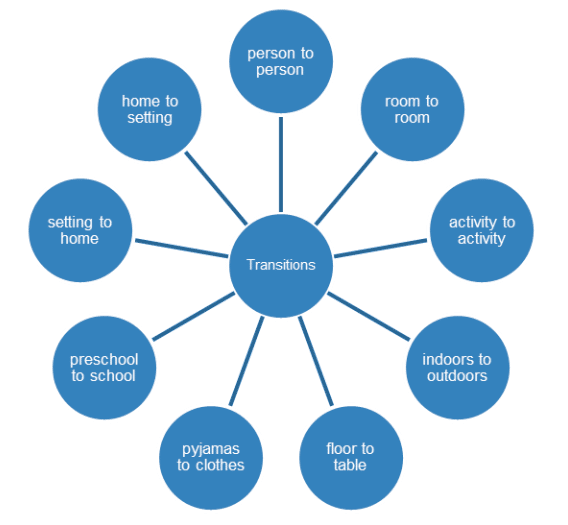Contents
Introduction
The key to a successful and seamless transition is to ensure good communication between all of those involved and to keep the child central to the whole planning process.
For a CYP with Autism we also have to consider the four key areas of difference https://www.autismeducationtrust.org.uk/what-is-autism/ and ensure that these differences are supported.
For example many CYP with ASC find change and transitions extremely difficult and seek high levels of structure, predictability and routine to feel safe and make sense of the world.
This may mean that greater attention/ awareness is needed to support all transitions during the CYP’s day including:

Key areas for consideration
| Strategy/intervention | Outcome sought: |
|---|---|
CYP will require a carefully planned transition which may include:
|
|
| Visual support strategies | Outcome sought: |
|---|---|
In addition to the visual supports embedded in the environment as part of the Universal provision consider:
|
|
| Sensory | Outcome sought |
|---|---|
|
|
Review CYP’s sensory needs and processing/ organisational needs to decide if he/she prefers to be;
or
|
|
|
Setting may find it useful to review activities/resources from the Communication Trust and Autism Education Trust
- The Communication Trust (speechandlanguage.org.uk)
- Universally Speaking http://www.aettraininghubs.org.uk/wp-content/uploads/2014/05/universally_speaking_-_early_years_web_version.pdf
- Early Years Autism Competency Framework https://www.autismeducationtrust.org.uk/shop/ey-cf/
- Early Years Autism Standards Framework https://www.autismeducationtrust.org.uk/shop/ey-standards-shop/
- Schools Autism Competency Framework https://www.autismeducationtrust.org.uk/shop/schools-cf-shop/
- AET progression framework tool https://www.autismeducationtrust.org.uk/shop/pf-shop/
- http://www.aettraininghubs.org.uk/wp-content/uploads/2012/05/37.1-Sensory-audit-tool-for-environments.pdf
- Consider purchasing Sensory Strategies booklet from the National Autistic Society
Setting may also find the following online Inclusion Development Programme tutorials useful
http://www.idponline.org.uk/eyautism/launch.html
Further information and resources can be found on the Communication and Interaction Teams webpage